For some time now, the city of Florence has once again become crucial in the debate on the contemporary, and since September 2021 it has also become the beating heart of former Young British Artist Jenny Saville’s Comedy, a Dantean yet earthly journey dropped into our times, creeping inside the hell of the contemporary. With, on the one hand, an exhibition project contrived as diffuse, and on the other, showing itself with a city that makes a fine show of itself by being touched, punctuated, in the chosen places of art, at the Museo del Novecento, at Casa Buonarroti, at Palazzo Vecchio, in the Church of the Innocenti and at the Museo dell’Opera del Duomo, by Saville’s pantagruelic works. Thus, the entire historic center is littered with his delicate sinopias, slight and accurate drawings, and giant oil paintings that scream. These are gory works at times, where violence is not denied, the body is crucial.
The exhibition, it is true, has ignited some controversy, but it could also be useful for a more heartfelt reflection, posing, perhaps a couple of old and new questions: about the nature of art, for example, the body, feminism, the comparison with art history and the ancient, the return of the human figure in painting. Conceived and curated by Sergio Risaliti, the exhibition tries to do all this. Or rather, does it make sense to have such exhibitions without such assumptions, and in a city like Florence?
Jenny Saville reinvents the city: perhaps this is exactly what one would not want to allow. As if to say that Florence must continually respect its acclaimed reputation as the cradle of the Renaissance, and never break ranks. But we wonder, in an irreverent tone, if art must be something stale, déjà-vu, a vision already known: if it does not break us out of our comfort zone and operate a disruptive shock, what debate does it open if it does not shake up those who contemplate it? If it does not “destabilize” it is not culture.

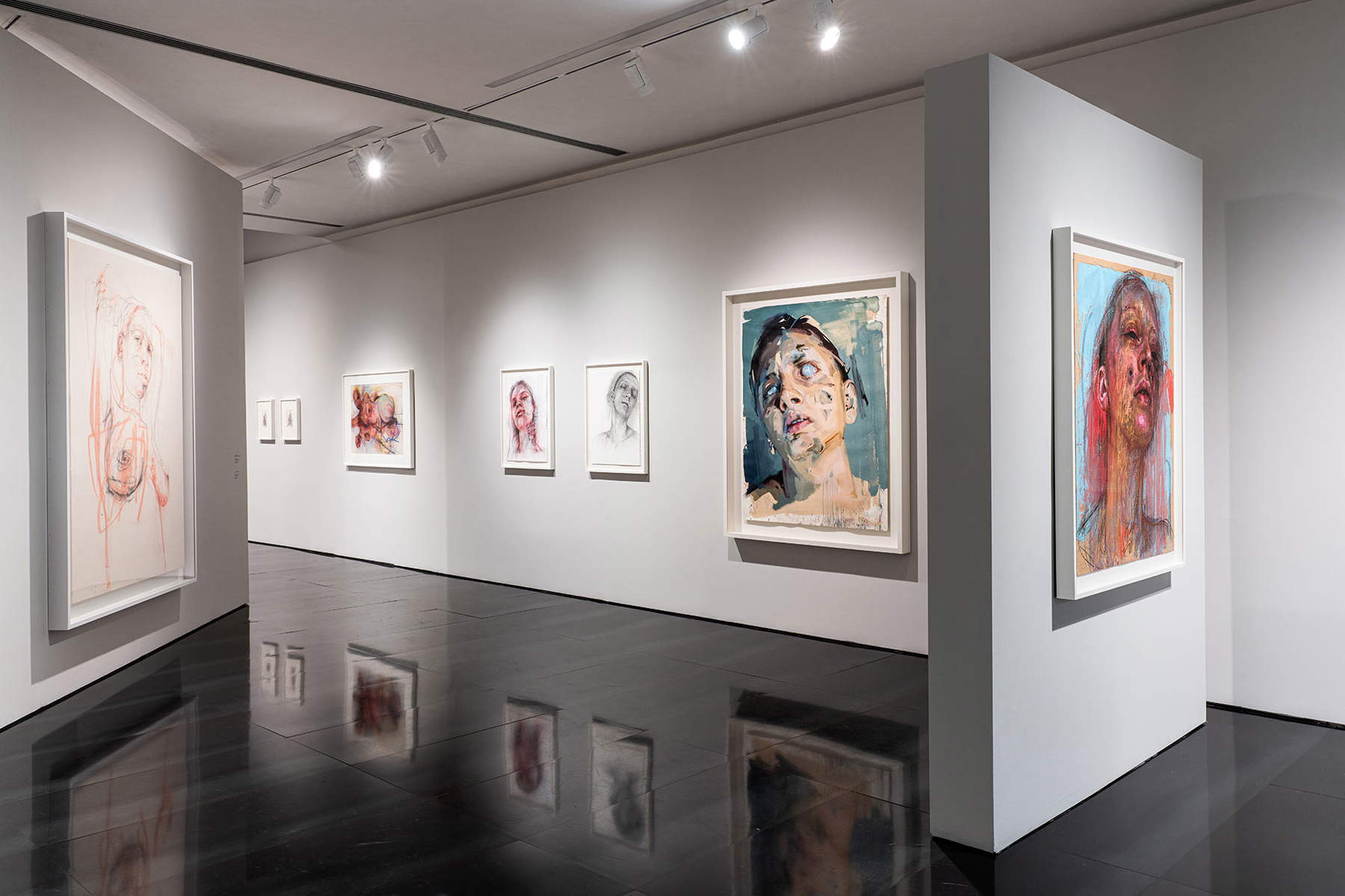
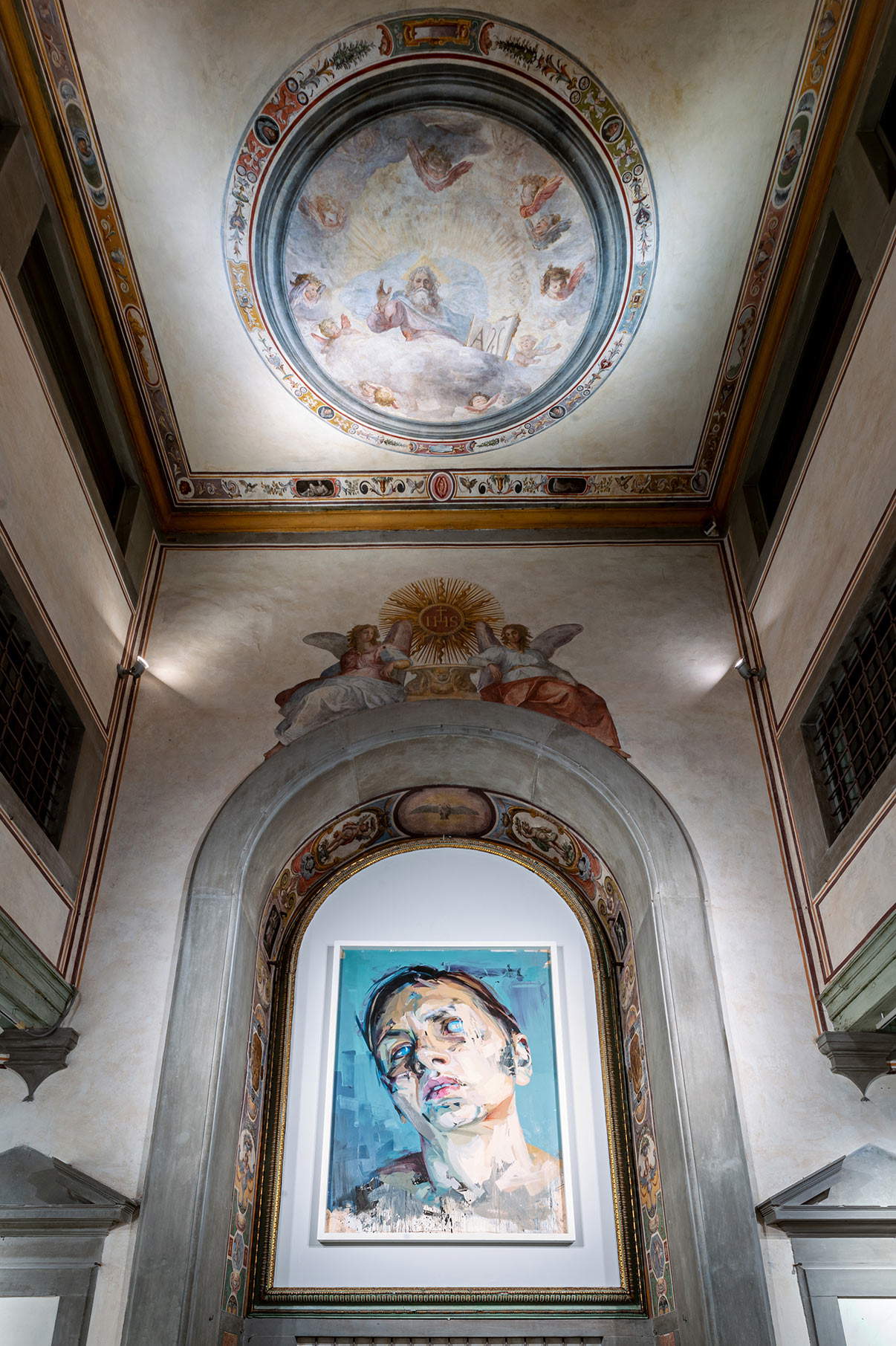
We are not talking here about art that has to produce hype and scandal, if it suits the viewer, or if it just rips them a like, that’s a different story: and there are already plenty of exhibitions like that, redundant, with no real cultural bearing. The Saville in Florence, on the other hand, causes discussion precisely at such a delicate historical moment as the one we are living through, while winds of war are blowing just a few miles from us, while Russian ships are transiting the Mediterranean, while women continue to be victims of their men, and children are increasingly orphaned. It is also for these reasons that the issues raised by Jenny Saville’s works prove more urgent than ever, dramatic and within time.
One of the major questions the exhibition raises is that of the aesthetic configuration of the work. Does the Aleppo Pieta, for example, Saville’s most emblematic work, just happen to snatch a like from us? Does it pass the litmus test in Italian society? Does it pander to its tastes? Thankfully, no, it is an experiment that Risaliti dares to undertake. Aleppo, the 2018 work, iconographically splits into an envelopment of bodies: the limbs, the clothes, the faces, multiply in an almost cubist dimensionality, and it does so while talking to the Pietà Bandini, one of Michelangelo’s last, left unfinished, placed in the Museo dell’Opera del Duomo, the Pantheon of Florentine sculpture. It is triple work this, drawing, painting, sculpture. It is transfigured reality and art always “veiled,” never erotic or pornographic. It undoubtedly has the flavor of a decidedly Michelangeloesque corporeality, especially with respect to the pyramidal composition that sees the heavy body of Christ supported in vain by Nicodemus. It is certainly a moving image, in either case, today as yesterday.
Aleppo speaks of Italian art, and it is at least the dramatic iconography of a new flight to Egypt, but it also evokes Piero’s Madonna del Parto who welcomes all the children of the world into her womb: the woman has no face, in fact, she is devoid of a precise identity, face, eyes and lips, all senses disappearing behind the death of the little ones.
Jenny Saville’s faces and bodies open wounds, scratch the crust of reality, are never smooth. They fray the artistic matter, the pictorial film, the surface of the painting is never smooth. Tintoretto and Titian, who thunderstruck the artist at a very young age (during a trip with her uncle) left their mark on her with their pulling the color to the nth power, until they frayed it, broke it down, made it incorporeal, fragmentary. Nothing is precise, sharp, smooth, polished. Saville’s timbre is a voice contrary to the “smoothness” that, according to Byung-Chul Han, distinguishes our days, and that would explain the success of Jeff Koons and the i-Phone: “smoothness is the hallmark of our time, because it does not hurt, or even offer any resistance.” Instead, the artwork, the one that has repercussions in the present, wreaks havoc, or at least it should.
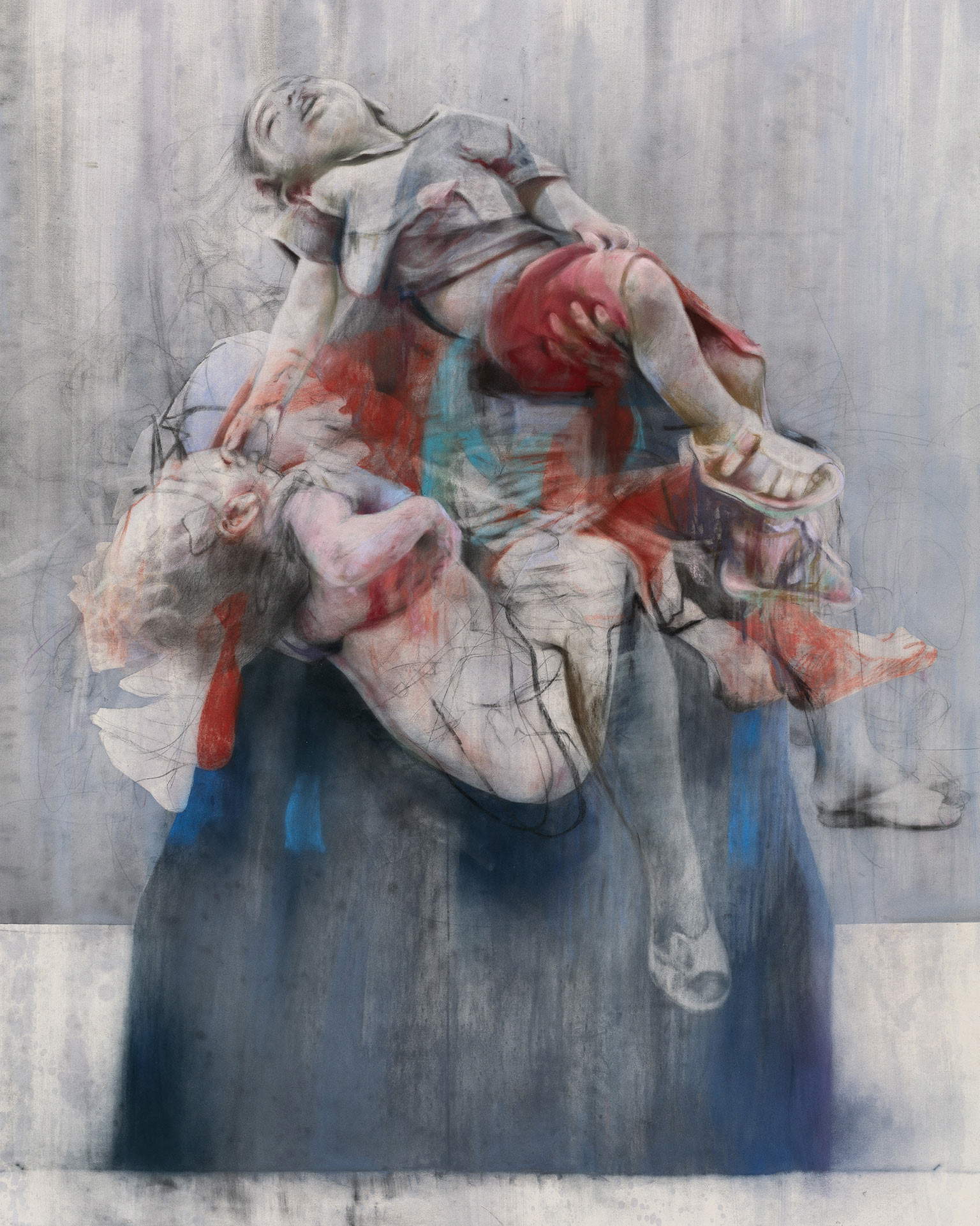
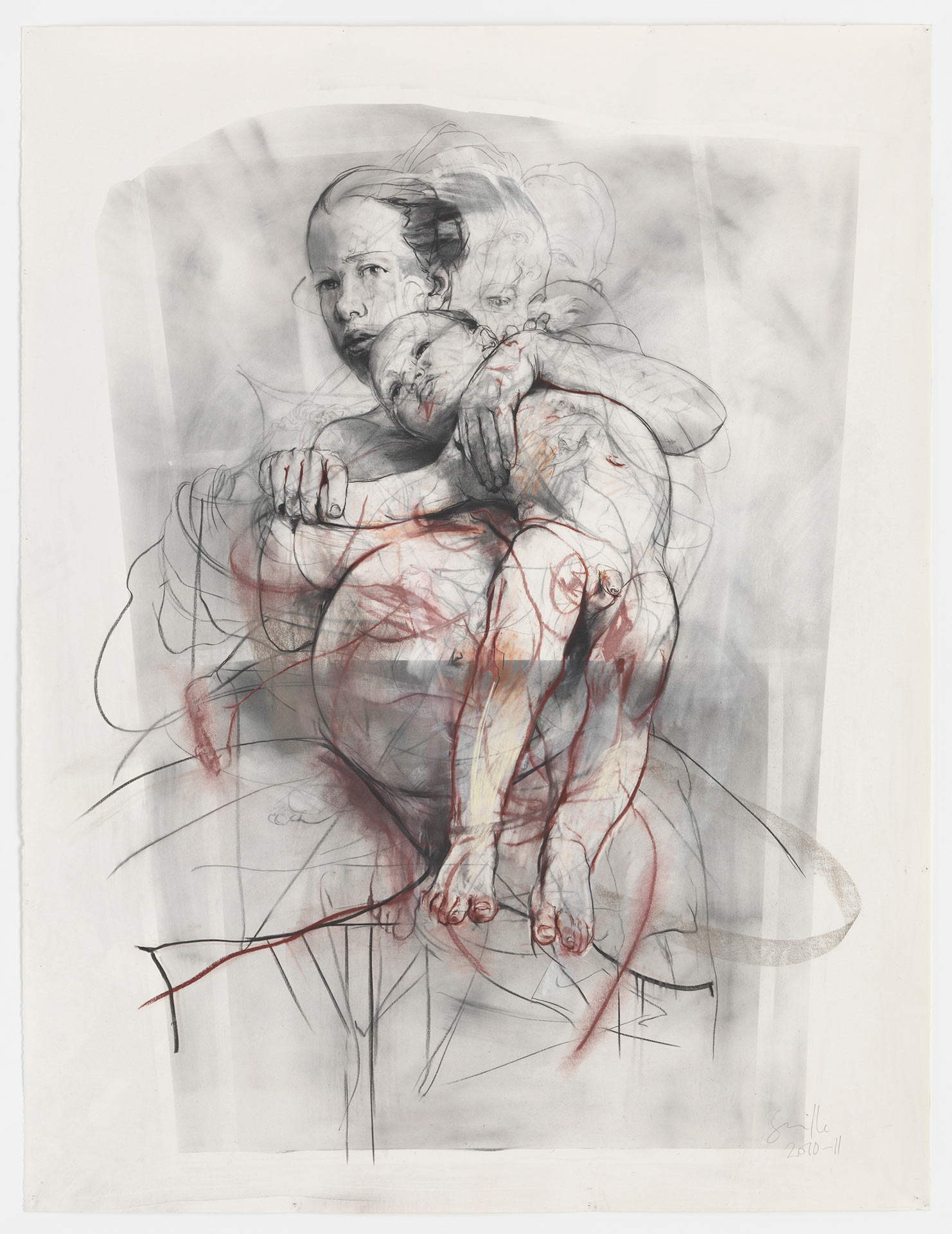
How many mothers’ faces, in our anesthetized age, will we still have to see denounced by news reports without it shocking us by leaving us to indifferent viewing? How many mothers will we learn of who have stood in vain looking for the bodies of their children mangled by bombs? How many more wars will we have to witness? And in what terms has the original Vesperbild morphed? Is the Pieta formula Saville learns from Michelangelo still a valid Pathosformel? Does it always make sense to posit ancient and contemporary, or are Florence with its Renaissance a commonplace, a stale ideal? This is a question that can shake us up, transform us, induce us to a change of course and a vision that goes in the opposite direction to the usual proliferation of images that often turn out to be too many, mute and deaf.
Art, otherwise, remains only a momentary excitement. Nietzsche posed this as a problem a century ago. Saville asks it, the exhibition asks it. So the first time Saville “falls” on his Dantean journey is in Aleppo, when he reflects on Syria, the land where so many children have been deliberately killed, during the long war that began in 2011, a phase of rebellion in the larger context of the so-called Arab Spring.
But it “falls” yet a second time and into the hellish chasm of deformed bodies in the work Fulcrum, exhibited this time in the Salone dei Cinquecento in Palazzo Vecchio, another symbolic place in the city. Here, the work rethinks the Mannerist use of treating the sign, in those broken features of the three huddled bodies, in which the exchange between hands and feet is an orgy of grotesque and deliberate lack of grace. Placing a work such as this in Cosimo I’s state room, where Giorgio Vasari’s battle scenes stand alongside the duke’s throne and Michelangelo’s work, the Genius of Victory, is a gamble that draws parallels between male strength and dominance over the fragile condition of women. Exposed, denuded, fat, ungainly, they are forced into a cramped space in the story as well as in the frame of Saville’s painting. The effect sought is that of women thunderously with their volume and the shapeless monstrosity of their bodies assaulting the space and claiming it, overflowing with their voluptuous pursuit of life.
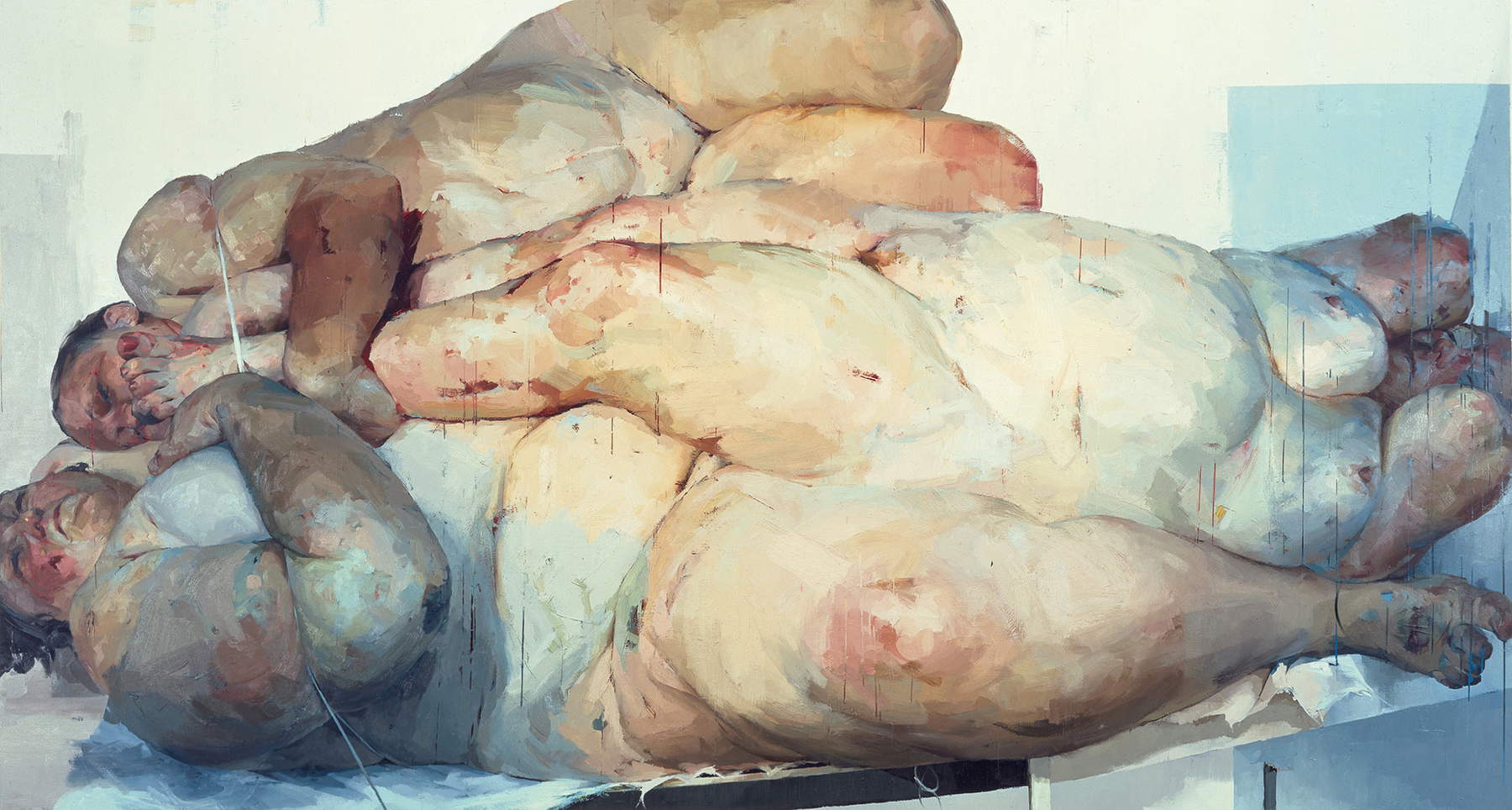
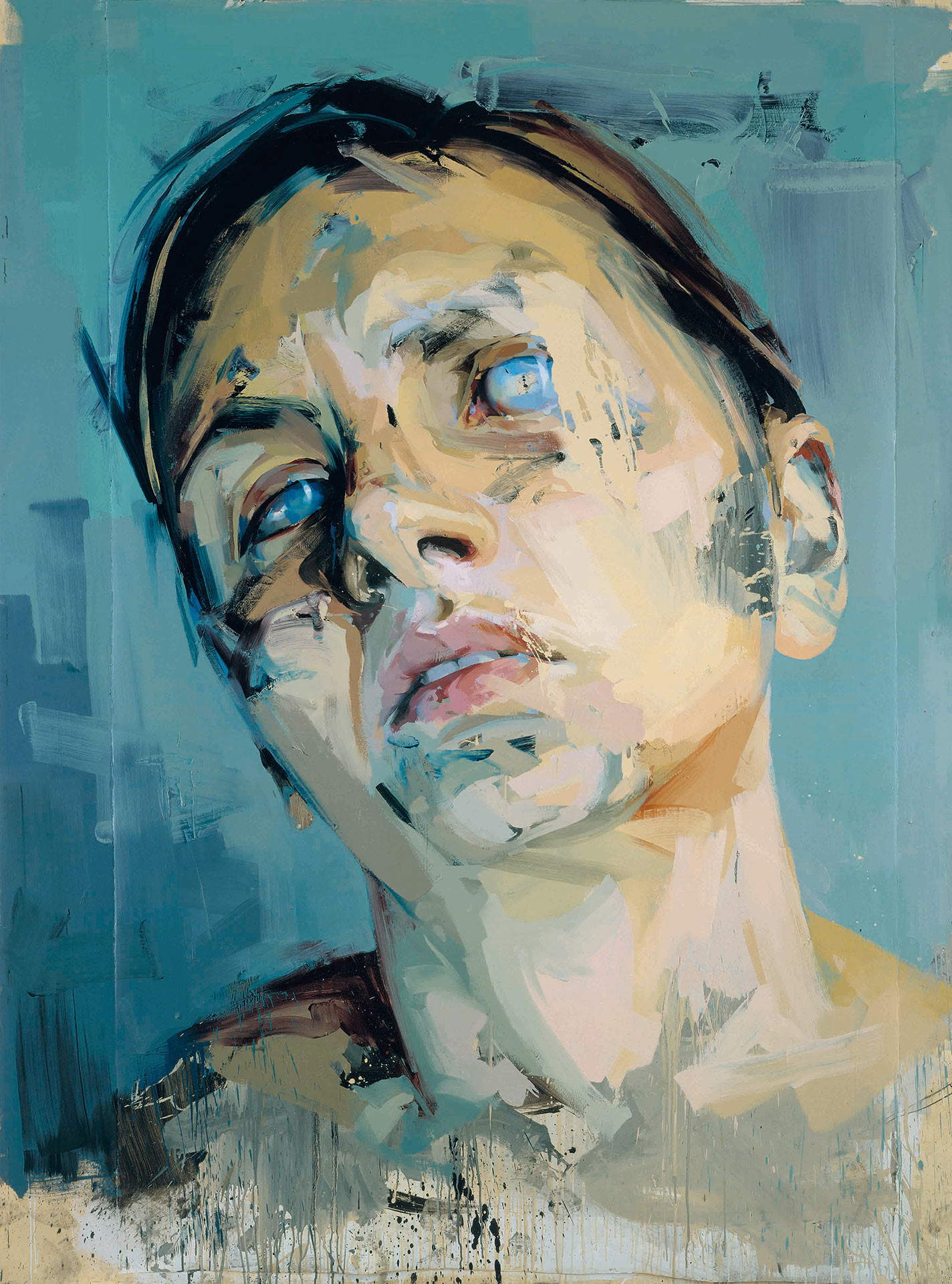
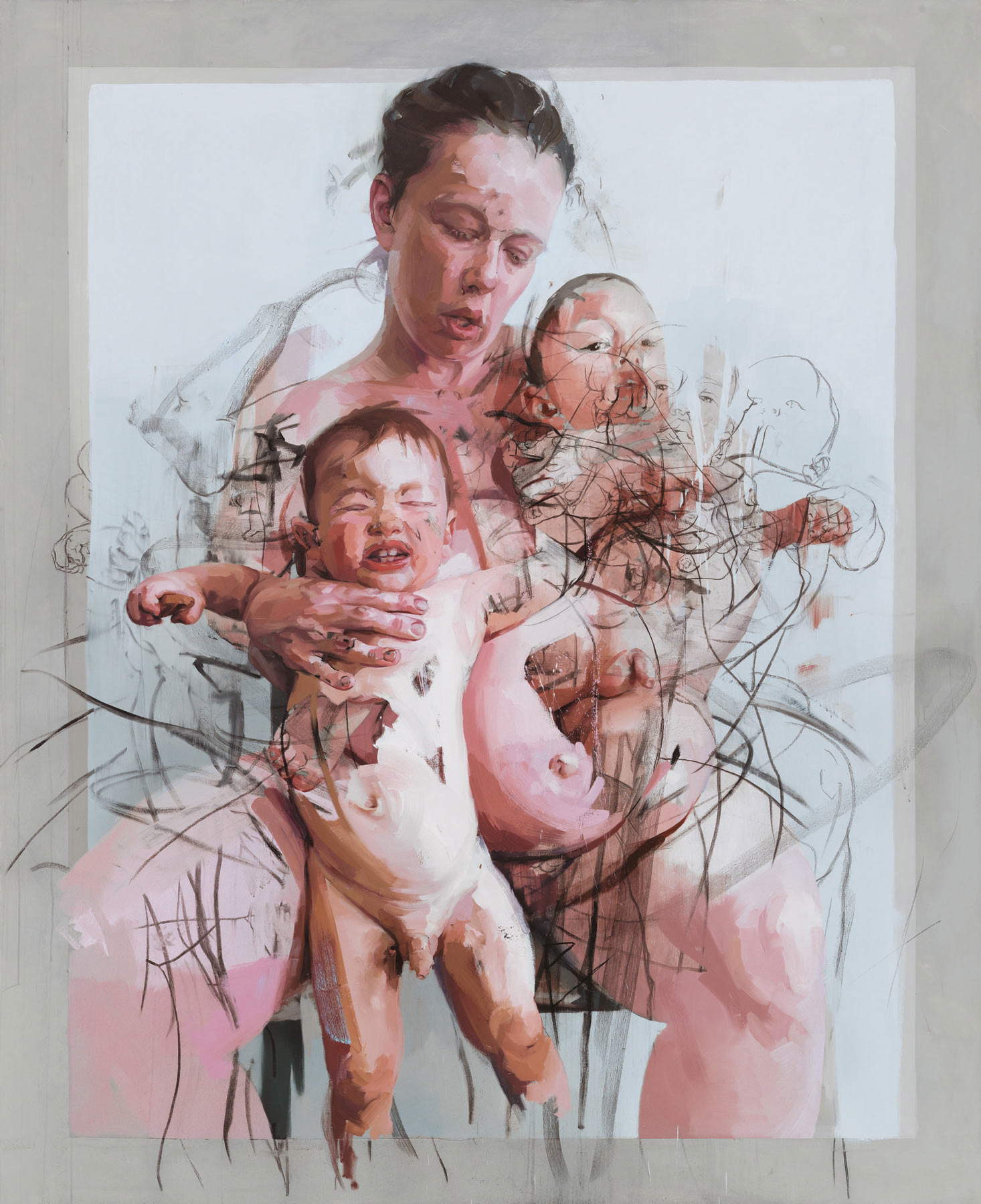
But pandemic also has a bearing on this choice of size. The body, in the past two years, has been much more present on media reality screens, showing oversized images of faces disfigured by mask abuse and bodies of people affected by the virus. For one death, one war, or another, the pandemic, in a word, as Marisa Fasanella would say, “the earth revolts and children and adults leave with evil in their bodies.”
More pain and body in the loggia of the Museo del Novecento with the work Rosetta II, where Saville sets aside forever the purely cyborg, posthuman and post-modern contemporary world to make it a provocative, hallucinatory and intimate hybridization of flesh and Giottesque humanity, as evident in the great manifesto of blindness which she depicts in Rosetta II and which is the story of a blind girl, Rosetta precisely, thought of both in the flesh and in a mystical vision and which finds its extreme parallel with Giotto’s lachrymose crucifix suspended in the center of the nave of Santa Maria Novella and, further in time and space, with the ecstasies of the Roman martyr saints.
In short, Saville investigates another pain that makes her “veins and wrists tremble,” that of women and girls deprived of their candor, modesty, and who from the earliest age have had to sacrifice themselves in the name of any god, whether Christian or Muslim, but also of those who cannot fully grasp reality. Technically, however, it is also a challenge, Modiglianesque, to traverse painting without the gaze.
And it is always the body that is at the heart of the dilemma, a body that Saville wants to liberate because it is bridled by centuries of subjugation and seemingly salvific rules. So this is why her women do not have “perfect” forms as fashion and the male eye would have it, women have many bodies, they are a social history that reverberates in the optical excesses that Saville knows how to impose with this exhibition to our lost attention.
“My every act reveals that my presence is corporeal and that the body is the mode of my appearance, this word face is me, in the body there is perfect identity between being and appearing, accepting this reality is the first condition of balance” (Umberto Galimberti)
Warning: the translation into English of the original Italian article was created using automatic tools. We undertake to review all articles, but we do not guarantee the total absence of inaccuracies in the translation due to the program. You can find the original by clicking on the ITA button. If you find any mistake,please contact us.